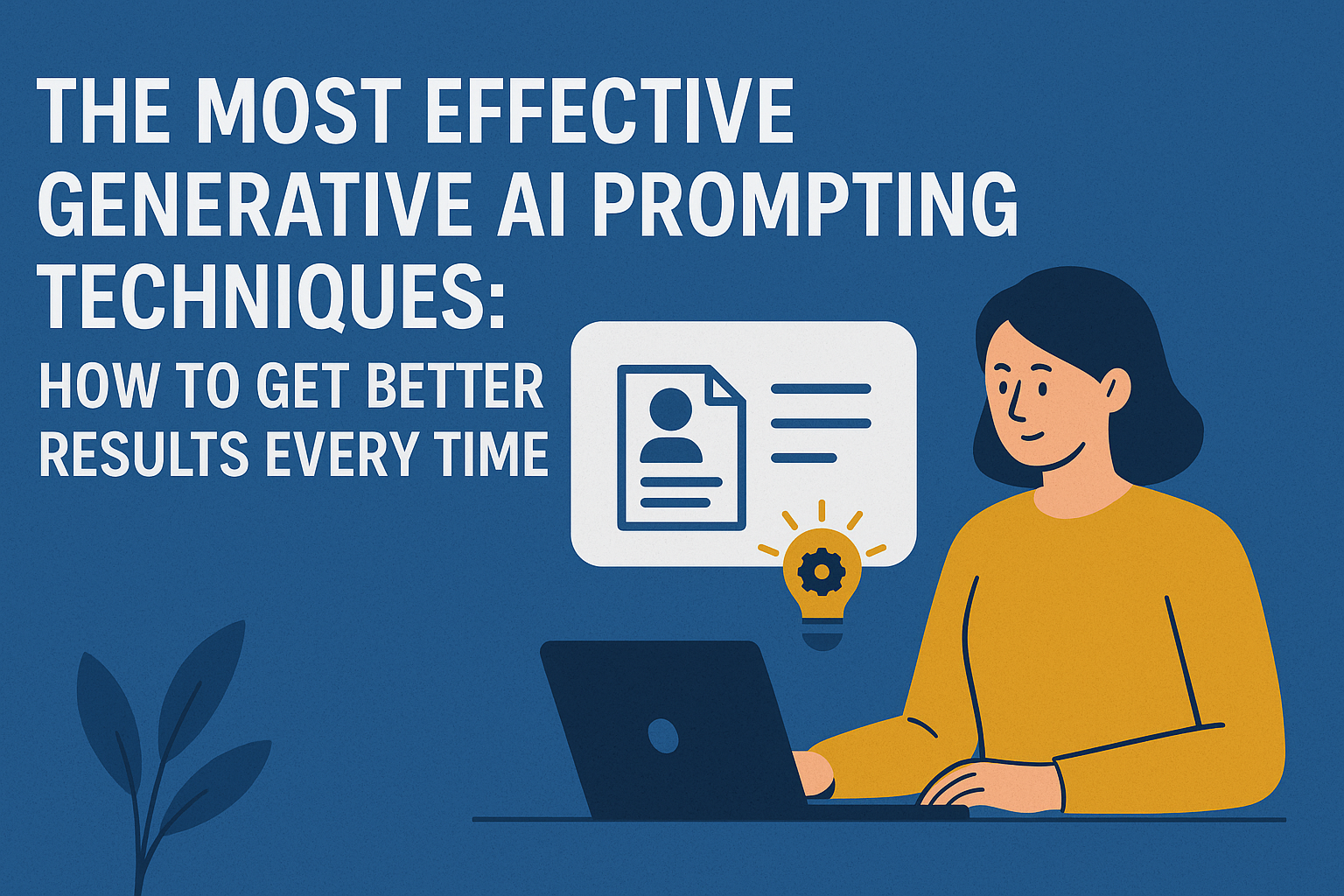Generative Artificial Intelligence (Gen AI) has rapidly become one of the most transformative tools across industries – from marketing and education to software development and data analysis. Yet, while the technology itself is remarkably powerful, the quality of what you get out of it depends almost entirely on what you put in. In other words, prompting effectively is the key to unlocking Gen AI’s full potential.
Whether you’re using OpenAI’s GPT models, Google Gemini, Anthropic Claude, or other platforms, the principles of effective prompting are remarkably consistent. This article explores how to craft better prompts, why they matter, and the most practical techniques to improve your outcomes.
Understanding the Role of the Prompt
A prompt is more than a simple instruction – it’s the bridge between your intention and the AI’s interpretation. The model doesn’t “think” like a human; it predicts text based on patterns it has seen before. That means your results rely on clarity, context, and direction.
For example, the vague prompt:
- “Write a paragraph about marketing.”
will produce something generic and possibly unhelpful.
Whereas a well-structured prompt like:
- “Write a 150-word introduction to a marketing strategy guide for small UK businesses. Use a friendly but professional tone and include one practical tip.”
gives the model clear direction, style, and purpose – resulting in a far stronger output.
Be Clear and Specific
The number one rule of effective prompting is specificity. If you leave gaps, the AI will fill them – but not necessarily how you want.
Instead of:
- “Explain data protection.”
Try:
- “Explain the UK’s Data Protection Act 2018 in simple terms suitable for small business owners. Focus on practical compliance steps rather than legal details.”
This version narrows the focus, defines the audience, and sets the tone – all of which guide the AI to respond more accurately.
Use Role-Based Prompting
A particularly powerful technique is role-based prompting, where you ask the AI to adopt a specific identity before responding. This instantly shifts the style and accuracy of its replies.
Example:
- “You are a cybersecurity consultant. Write a briefing note for a non-technical audience explaining why regular password audits are essential.”
By defining the role, you guide the AI’s vocabulary, tone, and assumptions – helping it to produce content that feels more authentic and targeted.
Give Context Before Asking Questions
AI performs best when it understands the background and goal of your request. Instead of immediately asking a question, it often helps to set the scene first.
For instance:
- “I’m writing a guide for learners studying for their UK driving theory test. Can you create 10 sample multiple-choice questions with explanations for each answer?”
This approach ensures the AI tailors its content to your purpose – reducing irrelevant or overly broad responses.
Chain of Thought: Step-by-Step Reasoning
When you want accuracy or detailed logic, ask the model to reason through a problem step by step before providing the final answer.
Example:
- “Explain step by step how to calculate VAT in the UK, then summarise the process in three bullet points.”
This structure encourages the AI to work logically, often leading to more reliable results – particularly useful for problem-solving, analysis, or technical writing.
Iteration is Part of the Process
Prompting isn’t a one-shot process; it’s a conversation. The first answer might not be perfect, but it provides a base to refine further. Treat each iteration as a collaboration by asking the model to make adjustments such as ‘make it more concise’, ‘add an example’, or ‘rephrase this for a UK audience’.
Use Examples to Anchor the Style
When you want a specific tone or style, provide an example. This helps the model mimic patterns more effectively than abstract descriptions alone.
Avoid Overloading or Contradicting Instructions
While detail is good, too many conflicting directions can confuse the model. Keep prompts cohesive and prioritise what matters most. If you need multiple tones or versions, ask for them separately.
Use Systematic Prompt Structures
Advanced users often rely on prompt templates or frameworks to keep things consistent. One simple and reliable formula is:
- [Role] + [Task] + [Context] + [Constraints] + [Output format]
Example: “You are a policy writer. Draft a 200-word summary of an organisation’s AI usage policy for employees. Focus on ethical use and data security, and present it as bullet points.”
Keep Learning and Experimenting
Prompting is a skill that improves with experimentation. Keep track of what works best for your use case, and test variations – the best prompts are often those refined over time.
Final EAH Thoughts
Generative AI is not about replacing creativity or expertise – it’s about enhancing them. Effective prompting turns the technology into a collaborative partner, helping you think faster, communicate clearer, and produce higher-quality work. The secret lies in clarity, context, and curiosity: tell the AI what you want, why you want it, and how you’d like it presented – and it will reward you with results that genuinely add value.

